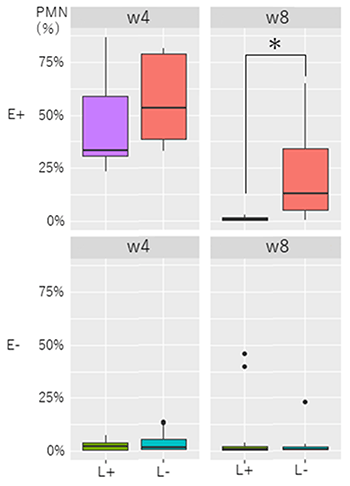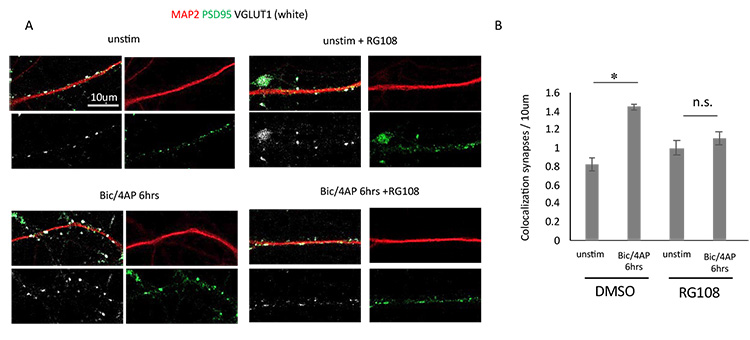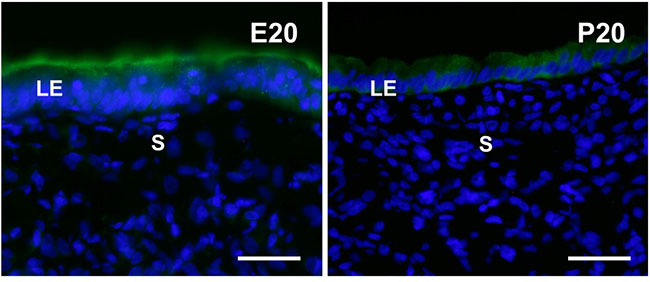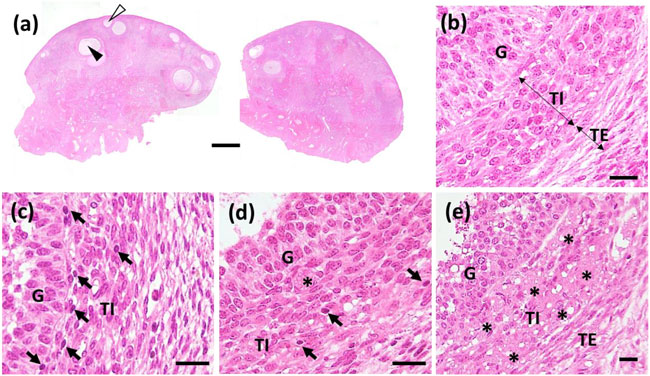
- 6 号 p. 337-
- 5 号 p. 291-
- 4 号 p. 241-
- 3 号 p. 161-
- 2 号 p. 79-
- 1 号 p. 1-
- |<
- <
- 1
- >
- >|
-
Fernando LÓPEZ-GATIUS, Irina GARCIA-ISPIERTO, Christian HANZEN原稿種別: Opinions and Hypotheses
2021 年 67 巻 6 号 p. 337-339
発行日: 2021年
公開日: 2021/12/14
[早期公開] 公開日: 2021/10/07ジャーナル オープンアクセスTwin pregnancies are classified into bilateral (one fetus in each uterine horn: 44%) and unilateral (both fetuses in the same uterine horn, right or left: 56%). The incidence of abortion during mid- to late gestation is approximately 1% in cows carrying bilateral twins and more than 40% in cows carrying unilateral twins. In this period, abortion seems most commonly associated with infectious agents. However, although this imbalanced abortion rate may imply that unilateral twin pregnancy is a non-infectious abortion factor, few available data can describe the cause of abortions in twin pregnancies. The current findings suggest that unilateral twin pregnancy is a non-infectious factor required for the etiological diagnosis of abortion in dairy herds.
抄録全体を表示PDF形式でダウンロード (652K)
-
Xinyue WU, Go KITAHARA, Tetsuya SUENAGA, Kanami NARAMOTO, Satoshi SEKI ...原稿種別: Original Article
2021 年 67 巻 6 号 p. 340-344
発行日: 2021年
公開日: 2021/12/14
[早期公開] 公開日: 2021/10/02ジャーナル オープンアクセス
電子付録The aim of this study was to clarify the influence of Lactobacillus spp. on the degree of endometrial inflammation in the postpartum period and the relationship between Lactobacillus spp. and pathogenic bacteria in the endometrium of postpartum dairy cows. Endometrial samples were collected from 41 Holstein-Friesian cows at 4 and 8 weeks postpartum using cytobrushes for polymorphonuclear neutrophil (PMN) count and bacterial culture to isolate Lactobacillus spp., Escherichia coli, and Trueperella pyogenes. The 4-week samples were divided into four groups (E+L+), (E+L−), (E−L+), (E−L−) according to whether endometritis was diagnosed (E+) and Lactobacillus spp. was isolated (L+). The diagnostic criterion for cytological endometritis was > 18% PMN. The average PMN% in the E+L+ group was lower than that in the E+L-group (P < 0.05) at 8 weeks postpartum. There were no significant correlations between the number of colonies of Lactobacillus spp. and E. coli or between that of Lactobacillus spp. and T. pyogenes. Lactobacillus spp. could reduce PMN% in dairy cows with endometritis during the puerperal period. In conclusion, the intrauterine presence of Lactobacillus spp. may have a positive effect on uterine involution in postpartum dairy cows.
 抄録全体を表示PDF形式でダウンロード (1007K)
抄録全体を表示PDF形式でダウンロード (1007K) -
Tsumugi YOSHIYAMA, Tomomi KANAZAWA, Toru TAKAHASHI原稿種別: Original Article
2021 年 67 巻 6 号 p. 345-351
発行日: 2021年
公開日: 2021/12/14
[早期公開] 公開日: 2021/09/24ジャーナル オープンアクセスThe diameters of the pre-ovulatory follicles (PF) and the largest follicle during the subsequent first follicular wave (W1LF), and plasma estradiol-17β (E2) concentrations were monitored on Days 0, 1, 3, 5, and 7 (ovulation = Day 1). Pregnancy was diagnosed on Day 30. Cows were classified into two groups according to the location of the dominant follicle ipsilateral (IG) or contralateral (CG) to the corpus luteum on Day 7. From Days 3 to 7, some follicles that had been determined as the subordinate in the previous examination exceeded the W1LF located in the opposite ovary in terms of the diameter. These were defined as switching (SW), whereas others were defined as non-switching (NSW). The diameter of PF was significantly smaller in pregnant (P) animals than in non-pregnant (NP) animals. The plasma E2 concentration on Day 0 was significantly higher in P animals than in NP animals and tended to be higher in NSW than in SW. In addition, plasma E2 concentrations around Days 3 to 7 tended to be higher in P animals of NSW than in NP animals of SW. The conception rates did not differ between IG and CG but were significantly higher in NSW than in SW. In the IG group, the conception rate tended to be higher in NSW than in SW.
 抄録全体を表示PDF形式でダウンロード (1256K)
抄録全体を表示PDF形式でダウンロード (1256K) -
Yoshihiro WAKABAYASHI, Hiroaki OKAMURA, Takashi YAMAMURA原稿種別: Original Article
2021 年 67 巻 6 号 p. 352-358
発行日: 2021年
公開日: 2021/12/14
[早期公開] 公開日: 2021/10/08ジャーナル オープンアクセスKisspeptin neurons in the arcuate nucleus (ARC), which co-express neurokinin B (NKB) and dynorphin A, are termed KNDy neurons. These neurons are candidates for the intrinsic gonadotropin-releasing hormone (GnRH) pulse generator. The central and peripheral administration of NKB or its receptor (NK3R) agonist evokes GnRH pulse generator activity and the subsequent pulsatile GnRH/luteinizing hormone (LH) secretion. However, the mechanism responsible for neural activation of the GnRH pulse generator in goats is unclear. We conducted electrophysiological and histochemical experiments to test the hypothesis that KNDy neurons receive NKB and that the signal is transmitted bilaterally to a population of KNDy neurons. Bilateral electrodes aimed at a cluster of KNDy neurons were inserted into the ovariectomized goat ARC. We observed the GnRH pulse generator activity, represented by characteristic increases in multiple-unit activity (MUA volleys). The unilateral administration of NKB or vehicle in the close vicinity of KNDy neurons under simultaneous MUA recording from both sides revealed that only NKB evoked MUA volley(s) immediately after administration. The timing of the MUA volley(s) evoked on the ipsilateral side was synchronized to that on the contralateral side. The double-labeled ISH for KISS1 and TACR3, which encode kisspeptin and NK3R, respectively, revealed that most KNDy neurons co-expressed TACR3. Therefore, NKB could directly stimulate KNDy neurons, following which the stimulatory signal is immediately transmitted to the entire population of KNDy neurons via connection with their fibers. This mechanism helps synchronize burst activity among KNDy neurons, thereby generating neural signals that govern pulsatile GnRH secretion.
 抄録全体を表示PDF形式でダウンロード (3964K)
抄録全体を表示PDF形式でダウンロード (3964K) -
Lei FAN, Menghan SHA, Wei LI, Qingling KANG, Jianli WU, Suhua CHEN, Na ...原稿種別: Original Article
2021 年 67 巻 6 号 p. 359-368
発行日: 2021年
公開日: 2021/12/14
[早期公開] 公開日: 2021/10/07ジャーナル オープンアクセスImmune imbalance of Treg/Th17 cells may contribute to recurrent implantation failure (RIF) during in vitro fertilization and embryo transfer (IVF-ET). In this study, we sought to determine the effect of intrauterine administration of mouse PBMCs prior to embryo implantation on endometrial receptivity and embryo implantation, and examine the underlying mechanism of Treg/Th17 cell balance following intrauterine administration of PBMCs. Pregnant mice were randomly divided into three groups: control group, embryo implantation dysfunction (EID) group, and EID with PBMCs group, and the number of embryo implantation sites was recorded during early pregnancy (Pd7.5). The balance of Treg/Th17 cells in the peripheral blood, spleen, and local implantation sites was detected during the peri-implantation period (Pd4.0) and early pregnancy (Pd7.5). The EID group demonstrated a significant decrease in the number of embryo implantation sites, while the EID with PBMCs group demonstrated higher number of embryo implantation sites compared to the EID group. The balance of Treg/Th17 cells in the peripheral blood and spleen tissues was not significantly different between the aforementioned groups. However, the local uterine ratio of the Treg/Th17 cells increased in the EID with PBMCs group compared to that in the EID group. Collectively, we found that intrauterine administration of PBMCs prior to embryo implantation effectively promotes embryo implantation rates. This may be attributed to the improvement in the local immune balance of Treg and Th17 cells compared with the overall immune balance.
 抄録全体を表示PDF形式でダウンロード (3291K)
抄録全体を表示PDF形式でダウンロード (3291K) -
Tomonori KAMEDA, Hideyuki NAKASHIMA, Takumi TAKIZAWA, Fumihito MIURA, ...原稿種別: Original Article
2021 年 67 巻 6 号 p. 369-379
発行日: 2021年
公開日: 2021/12/14
[早期公開] 公開日: 2021/10/07ジャーナル オープンアクセス
電子付録Post-mitotic neurons do exhibit DNA methylation changes, contrary to the longstanding belief that the epigenetic pattern in terminally differentiated cells is essentially unchanged. While the mechanism and physiological significance of DNA demethylation in neurons have been extensively elucidated, the occurrence of de novo DNA methylation and its impacts have been much less investigated. In the present study, we showed that neuronal activation induces de novo DNA methylation at enhancer regions, which can repress target genes in primary cultured hippocampal neurons. The functional significance of this de novo DNA methylation was underpinned by the demonstration that inhibition of DNA methyltransferase (DNMT) activity decreased neuronal activity-induced excitatory synaptogenesis. Overexpression of WW and C2 domain-containing 1 (Wwc1), a representative target gene of de novo DNA methylation, could phenocopy this DNMT inhibition-induced decrease in synaptogenesis. We found that both DNMT1 and DNMT3a were required for neuronal activity-induced de novo DNA methylation of the Wwc1 enhancer. Taken together, we concluded that neuronal activity-induced de novo DNA methylation that affects gene expression has an impact on neuronal physiology that is comparable to that of DNA demethylation. Since the different requirements of DNMTs for germ cell and embryonic development are known, our findings also have considerable implications for future studies on epigenomics in the field of reproductive biology.
 抄録全体を表示PDF形式でダウンロード (5878K)
抄録全体を表示PDF形式でダウンロード (5878K) -
Xiaoyu CHEN, Fuxian YU, Zhiwei ZHU, Jing HUANG, Liang ZHANG, Jianzhi P ...原稿種別: Original Article
2021 年 67 巻 6 号 p. 380-385
発行日: 2021年
公開日: 2021/12/14
[早期公開] 公開日: 2021/10/16ジャーナル オープンアクセスHormonal products have been developed for fixed-time artificial insemination (FTAI) to improve the efficiency of swine production. Here, we evaluated the effect of an FTAI protocol initiated during different phases of the estrous cycle on follicle development and ovulation in gilts. A total of 36 gilts were equally divided into three groups designated as the luteal (L), follicular (F), and post-ovulation (O) groups and fed with 20 mg of altrenogest for 18 days, followed by intramuscular injection of 1000 IU PMSG at 42 h after withdrawal of altrenogest, and 100 μg of GnRH after an 80-h interval. The L group had the highest number of follicles 4–6 mm in diameter, as well as corpora hemorrhagica. The mRNA expression of caspase-9 in the L group were significantly lower than those in the O and F groups (P < 0.05), while CYP11A1 and VEGF mRNA expression levels were significantly higher (P < 0.05). Moreover, FSHR mRNA levels were significantly higher in the O group than in the L, F, and control groups (P < 0.05). LHCGR and CYP19A1 mRNA levels were the highest in the F group (P < 0.05). Thus, the changes in the expression of genes associated with follicular development, maturation, and ovulation identified in this study indicated that initiation of the FTAI protocol during the luteal phase induced a better environment for follicle development and ovulation in gilts.
 抄録全体を表示PDF形式でダウンロード (1272K)
抄録全体を表示PDF形式でダウンロード (1272K) -
 Kaiyu KUBOTA, Masafumi MIWA, Ken-Go HAYASHI, Misa HOSOE, Miki SAKATANI原稿種別: Original Article
Kaiyu KUBOTA, Masafumi MIWA, Ken-Go HAYASHI, Misa HOSOE, Miki SAKATANI原稿種別: Original Article
2021 年 67 巻 6 号 p. 386-391
発行日: 2021年
公開日: 2021/12/14
[早期公開] 公開日: 2021/10/14ジャーナル オープンアクセスIn cow herd management, inadequate embryo implantation leads to pregnancy loss and causes severe economic losses. Thus, it is crucial to understand the molecular mechanisms underlying endometrial receptivity and subsequent embryo implantation. Transmembrane glycocalyx mucin 1 (MUC1) has a large and highly glycosylated extracellular domain known to inhibit embryo implantation via steric hindrance. The role of MUC1 in the bovine endometrium remains to be explored. Herein, we used simple but reliable in vivo and in vitro experiments to investigate the expression and regulation of MUC1 in the bovine endometrium. MUC1 gene expression was analyzed in endometrial epithelial cells collected by the cytobrush technique using reverse transcription-quantitative polymerase chain reaction. MUC1 protein expression was evaluated by immunohistochemical analysis of endometrial samples collected from slaughtered cows. We used an in vitro cell culture model to study the regulation of MUC1 expression by treating cells with sex steroidal hormones or co-culturing cells with a blastocyst. The results revealed that MUC1 was expressed and localized to the apical surface of luminal epithelial cells in the bovine endometrium. MUC1 expression disappeared during the luteal phase of the estrous cycle and during pregnancy. 17β-estradiol induced MUC1 expression, whereas progesterone inhibited its increase and co-culturing with blastocysts did not affect the expression. A long postpartum interval is a known risk factor for reduced fertility, and MUC1 expression was higher in this compromised condition. Our results demonstrated the MUC1 regulation by steroid hormones in bovine endometrium for embryo implantation, and we observed a negative correlation between MUC1 expression and fertility.
 抄録全体を表示Editor's pick
抄録全体を表示Editor's pickCover Story:
The endometrial surface is required to reject attachment of exogenous undesirable substances such as pathogens, while occasionally shifting properties to allow physical interaction with an embryo to support a successful pregnancy. Kubota et al. reported that MUC1, a potent inhibitor of cellular contact via its large extracellular glycoprotein domain, localizes to the apical surface of bovine endometrium (upper panel, green staining). This MUC1 barrier can be removed in response to steroid signaling at receptive phase and during pregnancy (lower panel), as revealed by immunohistochemistry (p. 386–391). Red signal (pseudo-color) represents DAPI-stained nuclei. Interestingly, MUC1 expression is elevated in the endometrium of cows with a long postpartum interval, which is a known risk for reducing female fertility. Thus, this observation is consistent with the proposed anti-attachment role of MUC1. These results suggest that MUC1 regulation plays a role in endometrial homeostasis and embryo implantation, and its negative correlation with fertility may be used as a diagnostic of reproductive efficiency.PDF形式でダウンロード (1084K) -
Jia-Si CHEN, Li-Kuang TSAI, Ting-Yu YEH, Tzai-Shiuan LI, Cheng-Han LI, ...原稿種別: Original Article
2021 年 67 巻 6 号 p. 392-401
発行日: 2021年
公開日: 2021/12/14
[早期公開] 公開日: 2021/10/23ジャーナル オープンアクセス
電子付録Our living environment has been full of electromagnetic radiation (EMR) due to the prevailing electronic devices and equipment. Intermediate frequency electromagnetic field (IF-EMF) or waves constitute a significant part of EMR; therefore, an increasing number of household electrical appliances have become a source of IF-EMF, and concerns about IF-EMF on health are gaining more attention. However, little information is available about its impact on female reproductive traits, such as germ cell viability and early embryonic development, particularly at the cellular and molecular levels. In this study, we used porcine oocytes as a model system to explore the effect of IF-EMF at various intensities on the in vitro maturation (IVM) of oocytes and their subsequent embryonic development. Our results showed that no difference in oocyte maturation rates was detected among groups, but the cleavage and blastocyst rates of parthenotes derived from EMF-treated oocytes decreased with the weaker IF-EMF intensity (25 and 50 Gauss) groups compared to the control group (P < 0.05). For cytoplasmic maturation, the weaker IF-EMF intensity groups also showed a peripheral pattern of mitochondrial distribution resembling that of immature oocytes and increased autophagy activity. No obvious differences in cytoskeletal distribution and total cell numbers of blastocysts were investigated in the four IF-EMF treatments compared to those in the control group. Although the underlying mechanism associated with EMF effects on oocytes and embryos is still elusive, we have demonstrated that low intensity IF-EMF exerts harmful effects on porcine oocytes during the maturation stage, carrying over such effects to their subsequent embryonic development.
 抄録全体を表示PDF形式でダウンロード (3575K)
抄録全体を表示PDF形式でダウンロード (3575K)
-
Ken-ichiro TATEMATSU, Mitsumi IKEDA, Yoshihiro WAKABAYASHI, Takashi YA ...原稿種別: Technology Report
2021 年 67 巻 6 号 p. 402-406
発行日: 2021年
公開日: 2021/12/14
[早期公開] 公開日: 2021/10/21ジャーナル オープンアクセス
電子付録Porcine zona pellucida proteins (ZPs) have been utilized as female immunocontraceptive antigens. The purpose of this study was to explore the potential use of silkworm recombinant bovine ZP4 as an alternative. When the protein was injected with monophosphoryl lipid A (MPL) – an immuno-stimulative agent – into two female goats, marked elevation of the anti-ZP4 titer was detected. Application of the purified specific IgG to a porcine in vitro fertilization system reduced the sperm penetration rate. In one goat, the cyclic profile of serum progesterone disappeared as the anti-ZP4 titer increased. Histological examination of the ovaries revealed degeneration of antral follicles with sparse infiltration of inflammatory cells in the theca, indicating that autoimmune oophoritis had been induced. Together, the present results suggest that recombinant ZP4 disturbs fertilization and exerts a pathogenic effect on follicle development in goats, thus indicating its potential as a female immunocontraceptive antigen.
 抄録全体を表示PDF形式でダウンロード (1769K)
抄録全体を表示PDF形式でダウンロード (1769K)
- |<
- <
- 1
- >
- >|